Understanding Windsocks: Essential for Watersports
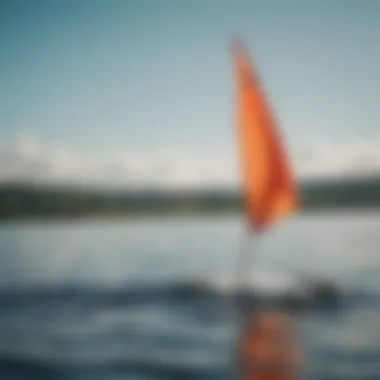
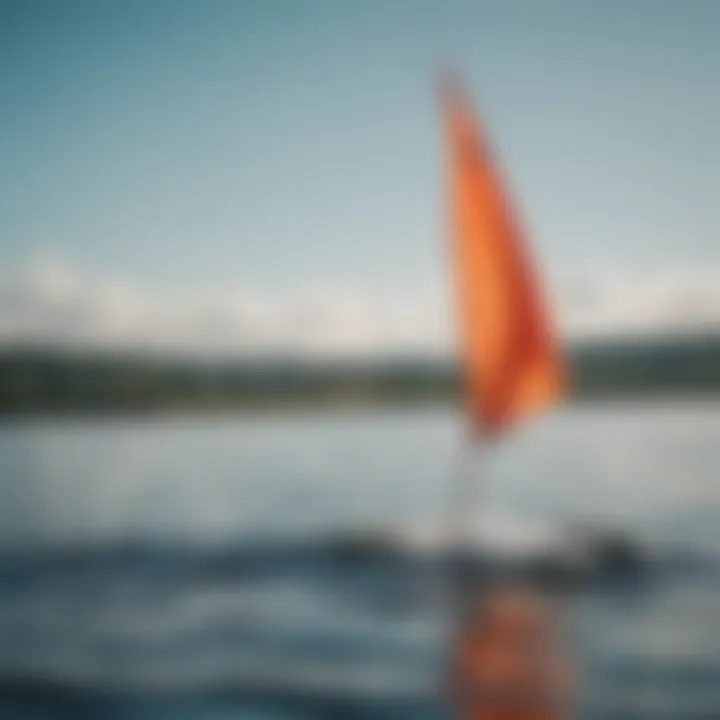
Intro
As the sun rises over the horizon, casting a golden hue on the water's surface, the ever-important windsock stands as a silent sentinel. For watersports enthusiasts, these simple devices are often the unsung heroes that help ensure a safe and enjoyable experience on the water. They provide crucial information about wind direction and speed, which can be pivotal in activities ranging from sailing to kiteboarding.
Understanding the mechanics and applications of windsocks can greatly enhance one's navigation skills. They can serve as your eyes to the wind, offering guidance in everything from choosing the right time to head out to deciding on the best course while on the water. This guide will explore these vital accessories, shedding light on gear recommendations and techniques so that every watersport aficionado can make the most of their time on the waves.
Gear Recommendations
When getting started with windsocks in your watersports toolkit, it’s crucial to have the right gear. Whether you're a beginner looking to dip your toes into the world of watersports or a seasoned pro seeking to fine-tune your sailing strategy, the right equipment will set you on the right path.
Essential Gear for Beginners
For those just starting out, it's not necessary to break the bank. A basic windsock, easy to read and made of durable material, can do wonders. Look for options that:
- Are lightweight and portable: Easy to carry means you won't leave it behind on a busy day at the beach.
- Feature vivid colors: Bright colors will catch the eye, making it easier to assess wind conditions at a glance.
- Come with a reliable mounting system: Ensure it can be set up quickly to avoid missing good wind.
Some beginner-friendly brands that are widely noted include GustBuster and Taylor Made. Their products strike a balance between affordability and functionality, perfect for the rookie watersport enthusiast.
Advanced Equipment for Professionals
For those who have honed their skills and seek precise measurements, it might be time to invest in advanced windsocks and additional gear. Look for:
- High-quality, weather-resistant materials: Equipment that can withstand the elements is key for seasoned watersports enthusiasts.
- Advanced digital anemometers: These can sometimes complement the visual cues provided by a windsock. Integration of this technology allows for real-time wind speed tracking.
- A mounting system that adjusts with the wind: Flexibility is essential for accurately displaying wind direction and strength under varying conditions.
Recommended brands include Xsens for digital devices and Sailflow for comprehensive weather tracking apps that work alongside traditional windsocks. This combination delivers the icing on the cake for those buttons-up professionals serious about performance.
"Knowledge is power—especially when navigating the unpredictable waters. Windsocks are your best mates to harness this wisdom."
In this first section of our comprehensive guide, we’ve covered the requisite gear you’ll need based on your level of experience. As we move forward, it’s time to delve into the techniques and tips that can improve your utilization of these essential tools on the water.
Preface to Windsocks
Windsocks are invaluable tools for anyone involved in watersports. These simple, yet effective devices serve to provide critical information about wind direction and speed, which is central to navigation and safety in aquatic environments. Without a clear understanding of the wind's behavior, watersport enthusiasts can find themselves facing unpredictable conditions, leading to potentially dangerous situations.
A wind indicator, such as a windsock, provides immediate visual cues that can enhance decision-making on the water. The design usually consists of a conical fabric tube that streams behind as wind fills it, indicating both strength and direction effectively. For athletes, instructors, and hobbyists alike, understanding the nuances of windsocks can enhance their experience, whether by improving performance or increasing safety.
Definition and Purpose
A windsock can be defined simply as a tool that visually denotes wind direction. This seemingly straightforward definition belies its multifaceted purpose. It informs sailors of the wind's strength and direction, guiding their routes accordingly. In kitesurfing, the windsock helps athletes align their boards for optimal conditions, maximizing thrill while minimizing risk. Though primarily associated with aviation and meteorology, the advent of modern watersports has seen its significance rise dramatically.
The function of a windsock is not just limited to indicating direction. It also aids in assessing wind speed. A flapping windsock can denote varying strengths of the gusts, from gentle breezes that barely stir the fabric to strong gusts that cause it to balloon and sway vigorously. Having this real-time feedback on wind conditions allows enthusiasts to adjust their techniques or courses, ensuring a better and safer experience on the water.
Historical Context
The origins of windsocks date back centuries, serving initially as simple instruments for aviators. It is interesting to note that the first recorded uses of windsocks can be traced to military airports in the early 20th century, where they were rigged to help fighter pilots gauge wind conditions before taking off.
In the realm of watersports, waves of popularity have surged throughout the decades, particularly with the growth of sailing and windsurfing in the 1970s and 1980s. Windsocks transitioned from military and industrial use to becoming a common sight at marinas and beaches, guiding enthusiasts of all stripes.
Over the years, the design and materials have evolved. Simpler cotton and polyester fabrics have given way to high-performance materials that withstand ultraviolet (UV) rays and various weather conditions. Thereby, the functionality of windsocks has not just persisted but improved. As watersports continue to develop, the prominence of windsocks as a navigation aid only grows.
Types of Windsocks
Windsocks come in various styles and designs, each tailored to meet specific needs in different contexts, particularly in the vibrant world of watersports. Understanding the different types is crucial for enthusiasts who seek to enhance their safety and performance on the water. Here, we’ll delve into the key distinctions between standard and specialized windsocks, alongside a look at material variations, emphasizing how these factors play significant roles in their functionality.
Standard Windsocks
Standard windsocks are often seen across marinas, boating docks, and airports. They are typically made from a durable fabric, designed to be lightweight for ensuring they flutter and fill easily with the slightest breeze. These windsocks communicate wind direction succinctly, acting as a reliable guide for sailors and powerboaters alike.
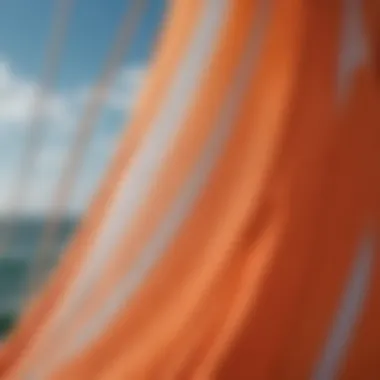
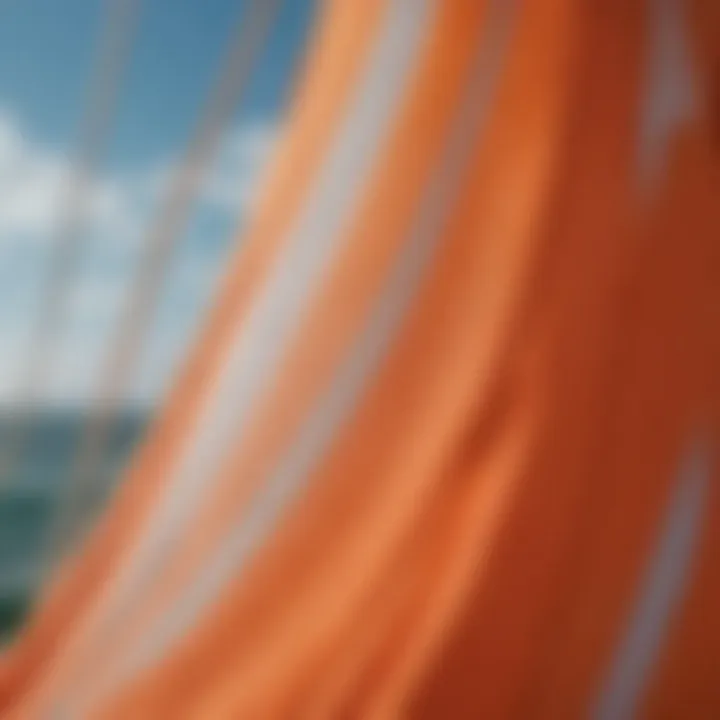
Advantages of standard windsocks include:
- Visibility: Bright colors such as orange or yellow make them easy to spot from a distance.
- Cost-effective: They are usually inexpensive, widely available, and simple to install.
- Ease of use: Their straightforward design allows even novice users to understand wind patterns without extensive training.
In watersports, having a standard windsock in place offers a quick visual reference. This can be particularly helpful during larger events or tournaments where multiple vessels are at play, and immediate wind data is critical.
Specialized Windsocks
While standard windsocks serve general purposes, specialized windsocks cater to specific environments and activities. These variations may include features that enhance performance under particular conditions.
For instance, high-visibility windsocks designed for night use incorporate reflective materials or LED lights, ensuring they stand out in low light conditions. Moreover, there are windsocks that are reinforced for extreme weather, suitable for areas prone to heavy winds or storms.
Diverse specialized windsocks may cover:
- Aero-Windsocks: Designed for accuracy in windsock placement on airfields, which can also benefit certain watersports by providing detailed wind data.
- Kite-Flying Windsocks: These have unique shapes and sizes, used prominently in kitesurfing or paragliding, lending aesthetic appeal while still functioning practically.
Specialized options enable athletes to adapt to their specific discipline, ensuring they can optimize their equipment to the weather conditions at hand.
Material Variations
The material from which a windsock is constructed greatly influences its efficiency and durability. Common materials include nylon, polyester, and sometimes even more innovative synthetic blends. Each has its own set of advantages depending on the intended use.
- Nylon: Lightweight, affordable, and quick-drying. Most standard windsocks fall into this category. However, they may wear out faster under prolonged exposure to UV rays.
- Polyester: Slightly heavier than nylon but provides excellent resistance to UV light and weathering, making it a solid choice for long-term usage in harsher environments.
- Specialty Fabrics: Some manufacturers use custom blends that can be even more durable and lightweight, providing advanced features such as water repellency or resistance to ripping.
It's important for watersports enthusiasts to consider both the material and type of windsock they choose. The right combination plays a significant role in ensuring that the equipment remains reliable, regardless of weather conditions.
"Choosing the right windsock is like selecting the right sail for your boat; it can make all the difference in your performance and safety on the water."
By understanding the variety in types and materials of windsocks, enthusiasts can make informed decisions that enhance their experience on the water and ensure greater safety.
Mechanics of a Windsock
Understanding the mechanics of a windsock is crucial for those participating in watersports. These devices not only serve as guides for wind direction and speed, but they also enhance the overall experience on the water. Knowledge of how windsocks function can give athletes, hobbyists, and instructors a significant advantage in navigating aquatic environments.
How Windsocks Function
Windsocks operate based on a simple yet effective principle: the flow of air. When the wind blows, air fills the windsock, causing it to extend and point in the direction the wind is coming from. Here are some elements to consider:
- Shape and Design: Most windsocks have a conical shape, which helps capture wind efficiently. This design allows for a clear visual signal of wind direction. For those constructing their own, a fabric that maintains its form is essential; you don’t want a floppy sock that doesn’t respond to the breeze.
- Anchoring: Attachments to ensure stability are vital. Whether using a pole or a structure, secure placement prevents the windsock from blowing away. A windsock at the mercy of the elements won’t provide accurate readings.
- Visibility: Bright colors or reflective materials can enhance visibility, making sure it can be spotted easily at a distance. This is particularly important for those sailing or flying kites, as having a clear view of the windsock can dictate immediate decisions.
"Windsocks are essential for understanding wind dynamics; their proper implementation can dramatically influence your decision-making on the water."
Factors Influencing Performance
Several factors can affect the performance of a windsock, and it's key to be aware of them:
- Wind Speed Variability: Rapid changes in wind speed might cause the windsock to react sluggishly or provide false readings. It’s essential to gauge wind conditions regularly, as they can spiral quickly out of control in dynamic environments.
- Surrounding Environment: Terrain, buildings, and even foliage can disrupt wind flow. Ensure your windsock is placed in an area that minimizes these interferences. An obstructed windsock won’t deliver reliable information.
- Material Quality: The durability of the windsock fabric matters. Materials should resist fading and tearing, as weather plays a big role in the wear and tear of outdoor equipment. Examine the sock regularly for any signs of damage, especially after adverse weather conditions.
Understanding these mechanics not only helps in selecting the right windsock but also improves user skill when it comes to interpreting its signals. Whether navigating sailboats on a sunlit day or steering a paraglider through quickening gusts, mastering the mechanics of a windsock is a must to maximize your watersport experience.
Applications in Watersports
Windsocks play a pivotal role in various watersports, acting as more than just a colorful decoration flapping in the wind. For enthusiasts and professionals alike, understanding the specific applications of windsocks can significantly enhance overall experience and safety on the water. As weather conditions rapidly change, the utility of these tools becomes crucial, impacting everything from navigation to emergency responses.
Sailing
In sailing, the accurate reading of wind direction is essential. Sailboats derive their movement from the wind, making a windsock an invaluable tool for any sailor. Positioned near a marina or waterfront, a well-placed windsock indicates wind speed and direction, providing immediate data that influences sail adjustments and course plotting.
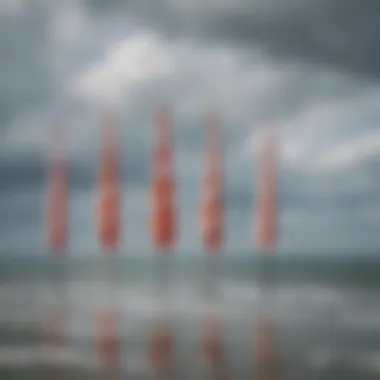

The type of windsock used matters too. A standard windsock with contrasting colors can be easier to see from a distance, especially when conditions are less than ideal. For sailors, understanding not just the presence of wind but its patterns can mean the difference between a smooth sail or being stuck adrift. In a race scenario, being cognizant of slight variations can give a sailor an edge over competitors.
"Sailing without the wind is like navigating life without direction - a windsock offers that crucial guidance."
Kitesurfing
Kitesurfing is a thrilling sport that indeed thrives on wind dynamics, and windsocks serve as vital instruments for kitesurfers. A kitesurfer's ability to assess wind strength right before jumping onto the board can greatly influence their performance and safety. Windsocks show immediate wind behavior, helping riders choose the right kite size for current conditions.
For beginners, a well-placed windsock on the beach can be a reassuring presence, aiding in preparation before heading out. It allows them to gauge if conditions are safe to practice and helps them understand which direction is optimal for launching their kites. Moreover, experienced kitesurfers often critique wind conditions based on windsock readings to adjust their maneuvers during the session.
Paragliding
Paragliding relies heavily on wind currents, and that’s where windsocks step in again. For paragliders, knowing the wind direction and its strength at takeoff and landing sites is critical for safety. Windsocks not only indicate these elements but also assist pilots in making informed decisions about when and where to launch.
In areas where paragliders often congregate, having consistent and clear windsock visibility can help with coordination in the air and landing approaches. It's about more than just personal safety; it involves being aware of other pilots and adjusting your course accordingly. Typically, a windsock positioned at the launch site can help reduce mishaps and enhance the overall experience for everyone in the air. Paragliders often remark on how essential these socks are in ensuring smooth and enjoyable flights.
In sum, whether you're sailing across a lake, kitesurfing amid waves, or paragliding over scenic landscapes, windsocks provide essential data that enhances safety and enjoyment. Properly construe the information provided by a windsock, and it unfolds a world of navigation assistance, vigilance, and a deeper connection to the elements.
Advantages of Using Windsocks
Windsocks might seem like a simple tool, but their advantages in the realm of watersports are nothing short of significant. They serve an essential role in enhancing navigation and improving safety on the water. Understanding these benefits can help enthusiasts, instructors, and even casual hobbyists make informed decisions about when and where to utilize this tool.
Enhanced Navigation
Windsocks provide crucial information about wind direction and speed, which is vital for various watersports like sailing and kitesurfing. By observing a windsock, participants can gauge how to adjust their sails or control their kite to maximize performance.
- Directional Insights: More than just a flag, a windsock indicates the wind's direction clearly, even under conditions where there are no visual cues, such as over water. This becomes particularly useful in situations where currents might create misleading surface patterns.
- Informing Strategy: Having this directional data at a glance enables athletes to plan their maneuvers effectively. For instance, a seasoned sailor may change tack based on the windsock reading, potentially gaining a competitive edge against rivals.
- Taking Wind Variability into Account: Windsocks are handy for understanding shifts in local wind patterns, allowing sports lovers to adapt their tactics as needed. This understanding fosters a more strategic approach, turning adverse conditions into opportunities for skillful navigation.
Improved Safety Measures
When it comes to safety on the water, windsocks are invaluable. They provide real-time feedback that can be a lifesaver, particularly for those who choose to venture out in unpredictable conditions.
- Recognizing Hazardous Conditions: Windsocks can be a warning system. If the windsock shows extreme wind speeds, watersport enthusiasts can determine whether to postpone their activities for another day rather than risk safety. This is especially important for kite or sailboat surfers, where strong gusts can lead to dangerous situations.
- Situational Awareness: By having a reliable visual symbol of the wind conditions, participants in water sports can remain focused. This is less about worrying and more about being aware of the environment. According to experts, maintaining this awareness is a cornerstone of risk management in watersports.
- Promoting Better Decision Making: Understanding the wind can influence decisions like when to launch, when to reposition, or even when to head back to shore. A windsock’s clear signals can prompt quicker action without the need for complicated calculations or reliance on potentially unreliable weather apps.
"A windsock may appear simple, but in the hands of a watersports enthusiast, it becomes a powerful tool that can steer decisions toward safety and performance."
Best Practices for Deployment
Deploying a windsock effectively goes beyond just sticking it in the ground and watching it sway with the breeze. Proper placement and consistent maintenance can drastically improve its function, leading to better navigation and enhanced safety when engaging in watersports. Understanding these best practices can be the difference between a calm day on the water and an unforeseen challenge.
Optimal Placement
The location of a windsock is crucial for accurate wind readings. Ideally, it should be placed in an open area away from obstructions like trees, buildings, or other structures that could interfere with wind flow. Consider the following factors when deciding on a location:
- Height Matters: A general rule of thumb is to mount the windsock at least ten feet above the ground. This height prevents turbulence from objects at rudimentary levels, providing a clearer indication of actual wind patterns.
- Distance from Water Edge: When deploying near the water, aim to position the windsock on the shore or floating structure at a distance that situates it away from sudden waves or water-derived air movements. This can mean locating it around twenty to fifty feet back from the water's edge for more stable readings.
- Accessibility: Make sure the placement is easily reachable for any necessary adjustments or maintenance. If it's too far to get to, it might be neglected overtime, losing its purpose.
- Visibility: Choose a spot that ensures the windsock is easily spotted by those on the water, be it from boats or onshore. High-visibility colors or patterns can aid in making the windsock more discernible.
With these tips, you’ll find a suitable location that maximizes the performance of a windsock, ensuring clear and consistent readings.
Maintenance Considerations
Like more tools for watersport enthusiasts, windsocks require maintenance to function at their best. Regular upkeep helps to ensure that the windsock remains effective and can reliably measure wind conditions. Here’s what to consider:
- Inspect for Damage: Routinely check for wear and tear. Material degradation from sun exposure and environmental factors can lead to holes or tears. If you spot damage early on, you can patch those areas up or replace the entire windsock.
- Cleaning: Dust, dirt, and the occasional bird droppings can accumulate. A simple wash with mild soap and water can refresh the fabric, allowing for maximum visibility and better airflow.
- Seasonal Storage: If you live in an area with harsh winters, consider taking down the windsock to prevent it from freezing or being ripped apart by ice. Store it in a cool, dry place to prolong its lifespan.
- Regular Calibration: For those who rely on precise wind data, calibrating the windsock with actual wind conditions is advisable. Testing against a handheld anemometer, for instance, can highlight discrepancies and aid in adjusting expectations.
By following these maintenance considerations, you ensure that your windsock continues to serve its purpose well, providing reliable information to enhance navigation and safety across watersports.
Remember: A well-maintained windsock is a key asset for successful and enjoyable outdoor adventures.
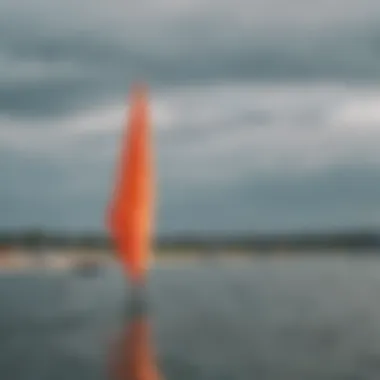

Innovations and Future Trends
As the waves of change roll through the world of watersports, the tools we use also evolve, and windsocks are no exception. The exploration of innovations and future trends highlights the importance and adaptability of windsocks, their design, functionality, and their role in enhancing the watersports experience. Keeping up with these trends is crucial for enthusiasts who want to navigate water sports safely and effectively. In this section, we will discuss some significant technological advances and their integration with other navigation tools, showcasing the multifaceted nature of windsocks.
Technological Advances
The development of windsocks hasn’t stood still; innovations in materials and design are reshaping how they function. Newer fabrics allow windsocks to be lighter, which enhances their responsiveness to slight changes in wind direction. Instead of the traditional nylon, we now see windsocks made from ripstop polyester. This change not only provides greater durability under harsh conditions, but it also optimizes visibility.
Another interesting advancement is the incorporation of smart technology. Some windsocks are now equipped with sensors that can relay real-time wind data to your smartphone or GPS device. Imagine the practicality; a windsock that tells you not just that the wind is blowing, but how fast it's blowing and in which direction. Saving time and effort, this kind of information is essential for adjusting tactics in competitive settings or recreational outings. It also opens the door to a more data-driven approach for enthusiasts wanting to track their performance over time.
Unlike the traditional approach, using electronic indicators and lights to signal wind direction can also be beneficial, particularly for safer navigation during low-light conditions. These methods provide an added layer of safety, allowing adventurers to navigate confidently even at dusk or dawn.
Integrating with Other Navigation Tools
Integration is the name of the game in today’s tech-driven world, and windsocks are stepping up to the plate. Innovations extend beyond wind-specific devices; they now work in harmony with other navigation gadgets. For instance, when paired with GPS systems, windsocks can enhance decision-making on the water. A sailor could interpret live wind data from a windsock and make navigational choices based on GPS coordinates to catch the best currents.
Furthermore, implementing apps that consolidate wind data and trajectory planning are making waves in the watersports community. Mobile applications capable of collecting data from multiple sources, including wind meters and weather forecasts, offer a comprehensive overview that can synthesize information for end users. This integration not just simplifies the experience, but also enriches it, allowing athletes to maximize performance.
It's not just about having the gadgets, but about making them work together. Windsocks paired with drones, for instance, can provide a broader, aerial perspective of wind conditions, enabling sports enthusiasts to plan their activities afar.
This level of sophistication paves the way for enhanced safety measures and improved navigation strategies, raising the overall standards for participants across all levels.
"The integration of technology with traditional equipment opens new vistas for efficiency and safety in watersports, creating a more informed experience for everyone involved."
Ultimately, as we ride the tide of innovation, the future of windsocks appears bright. Those investing in cutting-edge equipment can expect not only performance enhancements but also better safety measures—keeping both adventure seekers and extreme sports enthusiasts well-informed on the mighty mysteries of the winds that guide them.
Environmental Considerations
In the context of watersports, environmental considerations can't be overlooked. Understanding how the use of windsocks impacts the natural ecosystem is vital not just for conservation efforts, but also for ensuring a harmonious relationship between sporting activities and wildlife.
Impact on Wildlife
Windsocks are often placed in areas with high activity from both humans and wildlife. The movement and visibility of these devices can affect local fauna. For example, birds may be startled by the sudden appearance of a windsock, especially if they fly low or nest in the vicinity. Certain species are more sensitive to human disturbances. So, it's crucial to be mindful of where you set up your windsock.
Some straightforward practices to mitigate the impact on wildlife include:
- Location Awareness: Identify areas where wildlife is frequently present and consider posting windsocks away from high-traffic habitats.
- Timing Adjustments: If possible, avoid installing windsocks during critical periods, such as breeding seasons for local birds and other animals when disturbances can be detrimental.
- Material Considerations: Opt for lightweight, bright colors that can be easily seen by wildlife, avoiding harsh materials that might cause injury if they come into contact.
The idea is to create a balance. For instance, while your windsock helps in navigating tricky winds, being cautious about its placement ensures native species can thrive without undue stress.
Sustainability Practices
In today's eco-conscious world, integrating sustainability practices into the deployment and maintenance of windsocks is a must. Athletes and outdoor enthusiasts are increasingly aware that their activities can show a footprint. That’s why it’s important to think about the materials and methods used in your windsock setups.
Here are a few sustainability insights:
- Material Selection: Look for windsocks made from recycled or biodegradable materials. This not only reduces landfill waste but also aligns with sustainable practices in outdoor equipment manufacturing.
- Reusable Hardware: Instead of opting for single-use equipment to secure your windsock, choose durable mounts or stands that can be used repeatedly across seasons or locations.
- Disposal Practices: When a windsock reaches the end of its life, dispose of it responsibly. Recycling or participating in local clean-up efforts can limit environmental impact. This might seem like a small gesture; however, every little bit helps when it comes to protecting the overall habitat.
Moving forward, as the watersports community grows, adopting such eco-friendly practices turns into an essential responsibility. By doing so, enthusiasts not only enhance their own experience on the water but also pave the way for future generations to enjoy the beauty of nature without causing undue harm.
Ending
The significance of windsocks in the realm of watersports cannot be overstated. They stand as fundamental tools tailored to the unique navigational needs of enthusiasts on various aquatic adventures. Understanding the role of windsocks and their applications helps athletes, instructors, and hobbyists not only enhance their performance but also improve their overall safety on the water.
Recap of Key Points
In the earlier sections, we delved into several aspects of windsocks that are crucial for any watersport lover:
- Definition and Purpose: Windsocks serve as visual indicators of wind direction and strength, which are critical for making informed decisions while sailing, kitesurfing, or paragliding.
- Types and Variations: We identified standard and specialized windsocks along with the materials used, noting how each type can be suited to different activities based on environmental conditions.
- Mechanics and Functionality: The mechanics behind how windsocks work, including factors affecting their performance, were discussed to provide insight into their operational reliability.
- Applications: Their specific uses in sailing, kitesurfing, and paragliding were highlighted to help users understand when and how to utilize them effectively.
- Benefits: Enhanced navigation and improved safety measures are among the primary advantages of using windsocks during aquatic activities.
- Best Practices and Maintenance: Optimal placement and maintenance considerations ensure that these tools remain effective for a longer duration.
- Environmental Insights: We also discussed the impact of windsocks on wildlife and highlighted sustainable practices that can be integrated into usage.
The Future of Windsocks in Watersports
Looking ahead, the future of windsocks appears bright, with numerous trends and innovations on the horizon.
- Technological Integration: As technology advances, we are witnessing trends that could incorporate smart features into windsocks. For instance, the development of windsocks with embedded sensors that can provide real-time data to mobile applications could revolutionize their functionality, allowing for smarter navigation solutions.
- Increased Awareness of Sustainability: As environmental considerations gain traction across all outdoor pursuits, the manufacturing and design of windsocks may evolve. More eco-friendly materials and production practices will likely become standard, catering to the environmentally conscious watersports community.
- Collaboration with Other Tools: The integration of windsocks with other navigation tools like GPS and wind meters could facilitate a smoother user experience. This collaborative approach not only enhances the experience of watersports but also promotes a comprehensive understanding of weather patterns.















